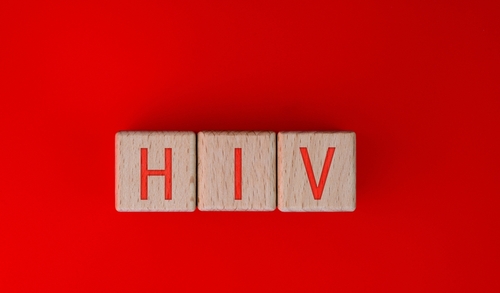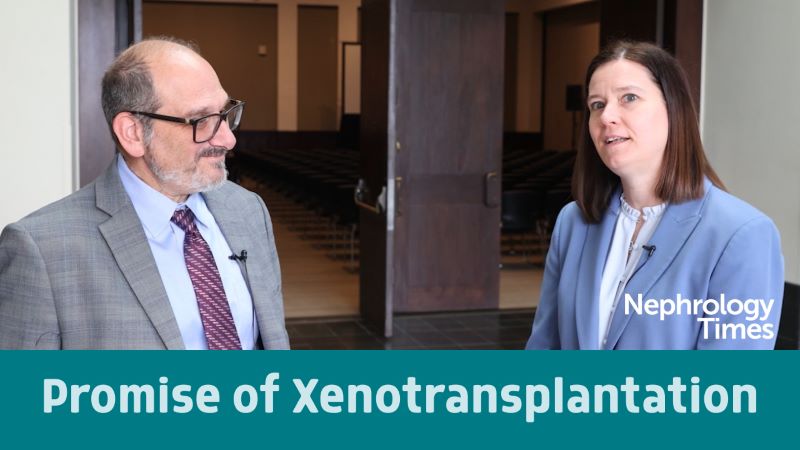
In individuals with HIV and end-stage renal disease, kidney transplantation provides a significant survival benefit. The risk of death is higher and access to kidney transplantation is lower among persons with HIV who are dependent on dialysis.
Since 2016 and the implementation of the US congressional HIV Organ Policy Equity Act, the use of kidneys from donors with HIV for transplantation to recipients with HIV for research purposes has been an increasingly utilized practice. (Effective November 27, 2024, the US Department of Health and Human Services removed the clinical research requirement for kidney and liver transplants involving donors and recipients with HIV.) However, data relative to the use of kidneys from donors with HIV are limited; existing small case studies did not include donors without HIV as controls.
Christine M. Durand, MD, and colleagues conducted a multicenter observational study that was larger than an earlier pilot study. The newer study was designed to examine the safety and noninferiority of kidney transplants from donors with HIV to recipients with HIV compared with kidney transplants from donors without HIV. The researchers also sought to assess the risks of HIV breakthrough infection, HIV superinfection, and posttransplant complications. Results were reported in The New England Journal of Medicine.
The study was conducted at 26 centers in the United States. The primary outcome was a safety event, a composite of death from any cause, graft loss, serious adverse event, HIV breakthrough infection, persistent failure of HIV treatment, or opportunistic infection. The safety outcome was assessed for noninferiority (margin for the upper bound of the 95% CI, 3.00). Overall survival, survival without graft loss, rejection, infection, cancer, and HIV superinfection were assessed as secondary outcomes.
A total of 515 individuals with HIV consented to participate in the study. Of those, 408 were eligible for transplantation and were put on a waiting list. Of the 408 eligible individuals, 58 were withdrawn from the study, 209 received a kidney, and 141 remained on the waiting list. Two of the 209 recipients withdrew from the study on the day of transplantation. Nine received a kidney from a donor without HIV and were randomly assigned to limited observation. The final analysis group included 198 participants who had received a kidney from a deceased donor; 99 received a kidney from a donor with HIV and 99 received a kidney from a donor without HIV. The two groups were similar in recipient and transplant characteristics.
The study included 146 donors, 64 with HIV and 82 without HIV. Twenty-seven donors initially had a false-positive HIV test result. The two groups were generally similar in characteristics. The exceptions were that donors with HIV were more often Black, had a lower median Kidney Donor Profile Index score, and were more often seropositive for hepatitis B and cytomegalovirus than the donors without HIV.
Median follow-up in the group of recipients of kidneys from donors with HIV was 2.2 years. Median follow-up in the group of recipients of kidneys from donors without HIV was 2.3 years. For the composite primary outcome, the adjusted hazard ratio in the group that received a kidney from a donor with HIV compared with the group whose donors did not have HIV was 1.00 (95% CI, 0.73–1.38), showing noninferiority.
The adjusted incidence ratio of opportunistic infections in the HIV-donor group compared with the non-HIV-donor group was 1.28 (95% CI, 0.51–3.18). At one year, overall survival was 94% in the HIV-donor group and 95% in the non-HIV-donor group. At three years, the corresponding values were 85% and 87%, respectively. At one year, survival without graft loss was 93% in the HIV-donor group and 90% in the non-HIV donor group. The three-year percentages were 84% and 81%, respectively.
At one year after transplant, the incidence of rejection was 13% in the HIV-donor group and 21% in the non-HIV group. The three-year values were 21% and 24%, respectively. The incidence rate ratio (IRR) for rejection in the group whose donors had HIV as compared with the group whose donors did not have HIV was 0.63 (95% CI, 0.37–1.10).
Median estimated glomerular filtration rate (eGFR) at one year after transplant in the group that received a kidney from a donor with HIV was 49 mL/min/1.73 m2 compared with a median eGFR of 48 mL/min/1.73 m2 in the group that received a kidney from a donor without HIV. At three years, median eGFR in the HIV-donor group was 41 mL/min/1.73 m2 and 48 mL/min/1.73 m2 in the non-HIV-donor group.
There was no significant difference between the two groups in the incidence of serious adverse events, including infections, infections leading to hospitalizations, opportunistic infections, surgical or vascular complications, or cancer. There were 11 opportunistic infection events in the HIV-donor group and eight in the non-HIV-donor group. Cytomegalovirus and esophageal candidiasis were the two most common infections.
The incidence of HIV breakthrough infection was higher in the group that received a kidney from a donor with HIV compared with the group that received a kidney from a donor without HIV (IRR, 3.14; 95% CI, 1.02–9.63). Among the 58 recipients in the HIV-donor group with sequence data, there was one potential HIV superinfection.
The researchers cited some limitations to the study findings, including the inability to achieve true randomization of organs from donors with HIV and those without HIV due to Organ Procurement and Transplantation Network allocation constraints.
In summary, the authors said, “This multicenter, observational study showed that kidney transplantation from donors with HIV to recipients with HIV is noninferior to kidney transplantation from donors without HIV to recipients with HIV.”






 © 2025 Mashup Media, LLC, a Formedics Property. All Rights Reserved.
© 2025 Mashup Media, LLC, a Formedics Property. All Rights Reserved.